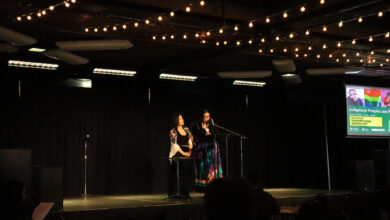Black History Month recognizes Canadian connection
February is well known as the month dedicated to celebrate Black History, but unknowing Canadians might be celebrating the wrong history.
University of Alberta Associate Professor in the Department of Political Science Malinda Smith said the history of Black History Month (BHM) in Canada is more complex than that in the United States. However, the holiday is commonly associated with the US, where it originated in the 1920s and was associated with slavery, and later with the civil rights movement.
The Canadian BHM was commemorated in the 1950s by Ontarian railroad porters, who travelled back and forth between the US and Canada. National recognition of the month was later petitioned to the federal government in the 1970s, and was officially recognized in 1995.
The acknowledgement of February as Black History Month was a push not only to celebrate black success in a variety of fields but also to promote the visibility of black people in society’s history.
“It’s about trying to make visible what is submerged or isn’t fully recorded in history and in school books,” Smith said.
Diversity issues in the Oscars, the tech industry, or parliament emphasize why promoting visibility of the black community is important, Smith said.
When looking at diversity in Canada, blacks are the third largest visible minority group after South Asians and Chinese, according to the 2006 Canadian census and the 2011 National Household Survey.
Smith said the lack of visibility is an issue rooted in the education system, since black figures are not highly visible in Canada’s historical education. As a political scientist, she said that even at the university level there are not many courses that talk about African Canadian mayors, politicians, or famous black female politicians.
“My view is that visibility would be stronger if black history was integrated into education, humanities, and music curriculum, as well as highlighting black people’s contribution to science and technology,” she said.
The complexity in the category of ‘black’ people in Canada is seen in who is identified as black. Black people in Canada consider themselves as African Caribbean, or black Caribbean, African Canadian, or from continental Africa. There are those who can trace their roots back to Nova Scotia, where some are indigenous.
“In the US they would be under one category — African American — but in Canada people often talk of Caribbean, African, Nova Scotian,” Smith said.
“There is a recognition of the complexity of that term in Canada that doesn’t exist in the US.”
Smith said that Canadian black history doesn’t get much attention because of ‘borrowed blackness,’ where people’s blackness on American television is considered to be the general black experience in Canada. This creates a problem where the US stereotypes of black people are inaccurately imported into the Canadian community.
Black history month in Canada is therefore resisting the borrowed blackness from the US, she said. This is done by drawing attention to key black figures in Canadian history, such as Michaelle Jean, the first black female Governor General.
In order to create some sort of visibility in the university, the University of Alberta hosts symposiums and lectures over the duration of the month. In March 2014, Michaelle Jean delivered a lecture that discussed the issues facing Canadian Caribbean and African Diasporas.
“In my view, Black History Month is still relevant,” Smith said.
“There is this concern that black history is actually American history, but it is still important to mark this month for the sake of visibility.”
There is still a problem in employment equity whereby there are just a “handful” of black professors at the U of A, she said. There is the need to make black success visible in areas other than sports and culture by recognizing their contributions as teachers and producers of knowledge, visionaries and entrepreneurs, Smith said.
Another issue is the superimposition of crime onto black bodies — especially black men, she said. For example, when looking at Somali youth, there are many issues surrounding their link to homicide, but there are just as many success stories of Somali artists, musicians, and entrepreneurs that get less attention, Smith said.
“When looking at the stereotypes, it is easier to associate black youth with crime than with talent,” Smith said.
However, in Canada, black men as a group have one of the highest levels of education, she said, stressing the need to continue promoting the positive ideas rather than negative stereotypes.
“The idea of promulgating a day or month … allows you to raise the profile in a more concentrated way, which enawbles you to continue the work for the rest of the year,” Smith said.
But Smith added she hopes that the context that surrounds the actual need for the month might disappear.
“That would be an indication that we have learned something and that we are transforming the societies in which we live in.”




